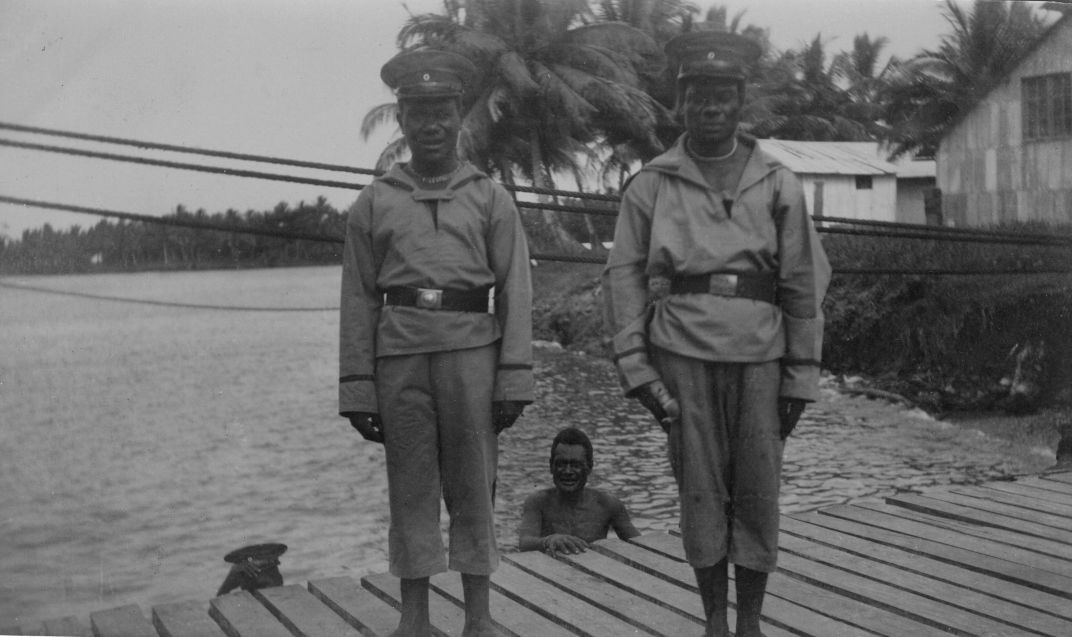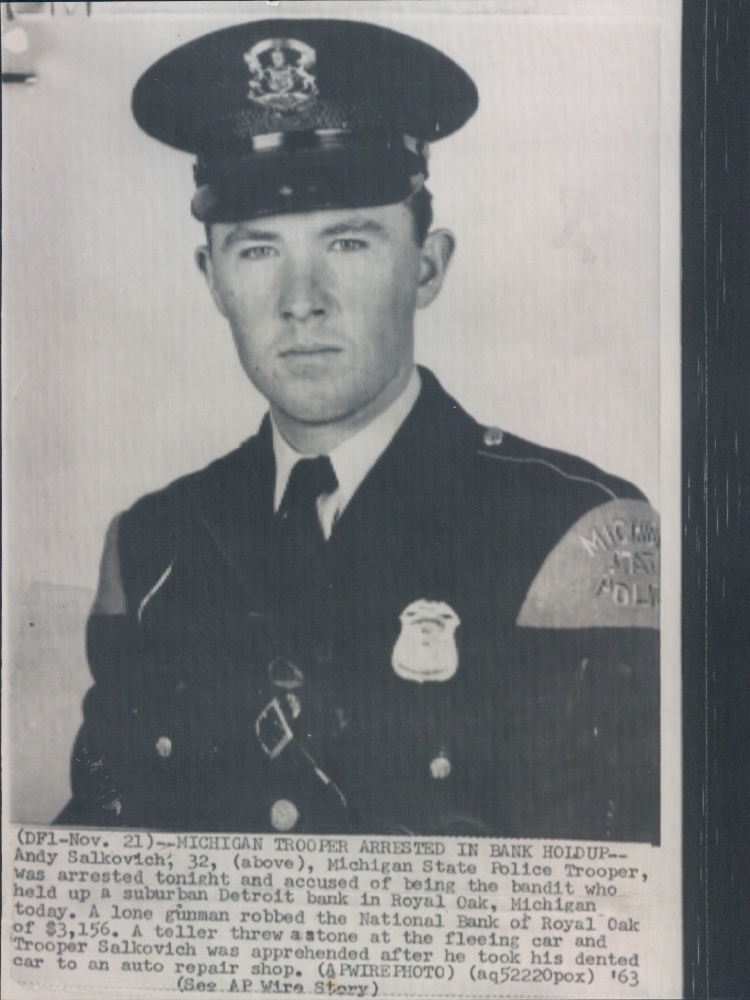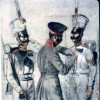-
Posts
122 -
Joined
-
Last visited
Content Type
Profiles
Forums
Blogs
Gallery
Events
Store
Posts posted by Mark C
-
-
Hello
in a cellar....(it was bring back by a French navy officer after Crimean war), i also found a Russian pith helmet...
bab
Well, we must see that Russian helmet! Please!
0 -
I notice how they identify the main beneficiary/mastermind of the imperial system as the British army corporal.
0 -
As an aside, one of the not so insignificant matters that was part of the military and political miscalculations, was the espionage of the Austrian Oberst Redl, who committed suicide in 1912, after he learned he was about to be arrested by the Austrians after they discovered he had been spying for the Russians for many years. Redl had given the Russians a wide range of Austrian and Germany military documents, including the Schlieffen plan almost in it's entirety. The Austrian government and military aware of the security breach, never informed the Germans, and pretended nothing had happened. The Germans never found out about the security breach until 1915, when Russian documents in Warsaw were found that detailed the degree of espionage that had taken place.
Not sure about your understanding of the Redl affair.
From "Beyond Nationalism: A Social and Political History of the Habsburg Officer," by Istvan Deak, Professor of History, Columbia University. (Page 145)
"On May 24, 1913, he was finally unmasked, thanks to the vigilance of the intelligence bureau of the German Great General Staff and of the Austrian state police. He killed himself that same night... The order for him to commit suicide actually marked the beginning of a lengthy attempt at obfuscation, in which both Conrad and the emperor were deeply involved. There ensued, nevertheless, a public scandal, which severely damaged the reputation of the general staff, the army, and the monarchy."
Kronenbitter in "War Planning 1914" page 26, is also clear: "...without the helping hand of the German Sektion IIIb, Redl would not have been caught."
And see the full color illustration in the 15 Juin 1913 issue of "Le Petit Journal" depicting the "trahison du Colonel Redl en Autriche, comment le coupable s'est suicide."
Lastly, I have not seen a source saying any part of Redl's passed information included the Schlieffen Plan.
0 -
Very nice pictures: lot of detail. Are the squarish caps on the rankers are typical of the Serbian Army for this period?
Very much so. Makes a Serbian ranker instantly identifiable from pre-WW1 through WWII. But in fact the pattern came from Austria in the 1880s or '90s.
0 -
Not necessarily reliable documentation, but I saw this on rootsweb:
"Looking for information on my Great Grandfather. Served in the German Military. We were told by his son that he left the German Military due to being struck with a riding croup by the Kiser. Wondering if anyone knows of records of deserters or just those in the military."
No doubt this fellow was a miserable varlet and deserved it, but which of the two meanings of croup might it have been? The croup that is a "hoarse, brassy cough," or the croup that is "a rump of a beast of burden, especially a horse."
0 -
If I remember right, no NVA officers were to be accepted into the Bundeswehr. Career NCOs were acceptable on a trial basis.
The West German general officer charged with organizing the transition wrote a book about it. I saw it in English. Things were happening very fast. The West Germans were conscious of what they wanted to happen, and that it might not be the exact same way as their NATO allies might suggest being done.
This general seemed kind of bourgeouis. Always remarking on the protocol being observed, how many higher rank officials came to meet with him, and what the furniture looked like.
This officer thought that the NVA officers were more concerned with their loss of economic security (read privilege) than anything else. They would fairly beg for jobs or special favor. He was rather scornful of them. Maybe he thought they should just start a business or something, but you know--unemployment can be pretty scary.
0 -
The site has quotes that probably explain much:
So they sent us in there. But the Aberdare Mountains or Hills they were called – they weren’t called Mountains – they rose to 12,000 feet. So you’d another 6,000 feet to go up to get over the top of them and this was very hard because it was difficult to breathe and you were carrying a wireless – everyone took their turn in carrying the wireless, you see. You’re carrying your rifle; your ammunition; your food, you know. So. It was very difficult to work at 10, 12,000 feet you know.
And it was very cold at that height, even in Africa. And also, it rained every night. It wasn’t much rain, it was low cloud and drizzle all the time, so you were pretty dry during the day, but every night your were soaking wet, you know. And you only had a ground sheet to make a little tent with. You know, that’s all you had. No, no sleeping facilities, just lie on the ground and fall asleep, you know0 -
The joke here is that none of the natives wear pants. They don't know what they are, or can't comprehend actually wearing them.
0 -
Hold on, folks. This kind of look is traditional for the Spanish Foreign Legion, for at least decades now. The heavy tatoos might go back to pre-Civil War, I'm not sure. The open-to-the-sternum shirt is the norm since at least the 1970s.
All that's new on this guerrero is the modern tatoo design, but not tatoos per se.
0 -
The Irish Transvaal Brigade had lots of Irish-Americans in it from the goldfields.
0 -
Look at Google Books for
The New Army List Militia List and Indian Civil Service List 1880Probably has everything about stations and commanders that you want.
0 -
I recently bought a collection of old newspapers - dating between 1776 and 1816. There are several reports that will be of interest to GMIC Members. I will post them by Countries and then put them all on our Non-Militaria Forum.
Papers that are 236 years old are RARE - even museums don't find them easy to keep in good condition. This set is
therefore a rarity in the collecting world. There are two that cover the War of Independence - for 1776 and 1788.
Strangely, neither has great detail on the War - more British Court news and adverts.
Please remember that the US declared Independence in 1776 - the year of this paper. Actual Independence came when
the War ended in 1783.
I found it remarkable to be able to read the speech by Benjamin Franklin - and so relatively shortly after he made the
address. However, this is balanced by the other report of intimidation and bullying to the printer. Unfortunately, when
feelings run high, violence often breaks out.
http://gmic.co.uk/uploads/monthly_11_2012/post-6209-0-64177000-1353939494.jpgclick
That's not Benjamin Franklin, but I believe his son, William. Staunch loyalist. Helped his dad in the kite thing.
PS Old newspapers aren't really a museum concern, but a library's. Mostly solved by extensive microfilm recording, and often libraries prefer not to have to keep the originals because of their bulk and fragility. Some cheap papers 100 years old fall apart at the touch, while some good quality paper over 200 years old can still be leafed through.
0 -
Some characters are quite Cyrillic, others are strange. They don't seem to make any Russian language sylables, much less words.
Maybe something weird - like Hungarian written in Fraktur?
0 -
I guess some Hungarian nobleman's personal costume.
0 -
A Google search yields several websites that suggest; Yes, German and Swiss regiments existed in the Piedmont-Sardinia Army.
One such website: http://www.napoleon-...c_piedmont.html
Of course, these are random data points and only suggest areas for further research as to the origin of your original posted photo.
No, this uniform is from sometime between 1850 and 1870. There were no non-Sardinian units in that kingdom's armed forces by that time.
For instance, see http://marksrussianmilitaryhistory.info/Sardinia1854.htm
0 -
Very fine exposition, that.0
-
Another (for other example see http://gmic.co.uk/in...seum-in-moscow/) Order of St. Andrew the First-Called with Diamonds.
This one was send by Alexander II to Süleymân I after the end of Crymean War.

Currently in the collection of Topkapi Saray Museum in Istanbul.
Dimensions
Height 120mm
Width 80 mm
Gold, dimonds, rubies and enamel...
Thanks to our colleague Mitya Ivanov we have an opportunity to examine this beatiful and unique specimen.
Not Sultan Süleymân I. The painting is of Suleiman the Magnificent, died 1566. Alexander II could have given a St. Andrew to any of the following sultans, none named Suleiman.
TANZİMÂTÇI
(The Strong Reformist or
The Advocate of Reorganization)
GHAZI (The Warrior)
 1 July 1839 25 June 1861
1 July 1839 25 June 1861 - Son of Mahmud II and Bezm-î-Âlem Vâlidā Sultân;
- Proclaimed the Hatt-ı Sharif (Imperial Edict) of Gülhane (Tanzimât Fermânı) that launched the Tanzimat period of reforms and reorganization on 3 November 1839 at the behest of reformist Grand Vizier Great Mustafa Rashid Pasha;
- Accepted the Islâhat Hatt-ı Hümayun (Imperial Reform Edict) (Islâhat Fermânı) on 18 February 1856;
- Reigned until his death.[56]
32 Abdülaziz I
BAHTSIZ (The Unfortunate)
ŞEHÎD (Shāhīd)
25 June 1861 30 May 1876
- Son of Mahmud II and Pertav-Nihâl (Pertevniyâl) Vâlidā Sultân;
- Deposed by his ministers;
- Found dead (suicide or murder) five days later.[57]
33 Mehmed Murad V
30 May 1876 31 August 1876
- Son of Abdülmecid I and Shāvk-Efzâ (Şevk-Efzâ) Vâlidā Sultân;
- Deposed due to his efforts to implement democratic reforms in the empire;
- Ordered to reside in Çırağan Palace where he died on 29 August 1904.[58]
Ulû Sultân Abd ūl-Hāmīd Khan
0 - Son of Mahmud II and Bezm-î-Âlem Vâlidā Sultân;
-
It looks so small, maybe an inch long. I think it might be a collar ornament, and perhaps late 19th century since a metal collar ornament is practically unknown for Napoleonic uniforms. For a cartridge pouch badge, I think it would have to be three times the size of yours.0
-
A query arose on a genealogical site regarding the indentification of these men. They are brothers from Holic in "Slovokia," said to be World War I. The uniforms are Austro-Hungarian, but the insignia are unfamiliar. Could they be early post-war Czech? What are the cap badges? The collar numbers are "4" for the man on the left and "301" (!) for the one on the right.
http://gmic.co.uk/uploads/monthly_07_2012/post-4974-0-71054100-1342616077.jpghttp://gmic.co.uk/uploads/monthly_07_2012/post-4974-0-90324400-1342616089.jpghttp://gmic.co.uk/uploads/monthly_07_2012/post-4974-0-23794100-1342616101.jpghttp://gmic.co.uk/uploads/monthly_07_2012/post-4974-0-54982500-1342616212.jpghttp://gmic.co.uk/uploads/monthly_07_2012/post-4974-0-10054500-1342616453.jpg
0 -
Thank you for these many pictures. You do a great service by recording it all.
0 -
I bought this photograph labeled as "New Guinea" and presumed it would be British, but lo and behold! Unless you have Thomas Morlang's book Askari und Fitafita you aren't likely to see many pictures of these types. I've posted this photo on my webpage at http://marksrussianmilitaryhistory.info/GermanPhotos/NewGuinea/NewGuinea.html (And no, I do not know why someone is in the water with his hat on. Prussian discipline, I suppose.)
 0
0 -
Very nice.
0 -
"...the Army List for 1815 is very explicit: Drummond was promoted Major on 18 June 1815 (presumably at the time of the battle itself?): "
I do not know about the British army, but in some others it was usual for promotion for distinction at a battle to be backdated to that day, and subsequent army lists would show that date for purposes of seniority.
0 -
Well, not really in the evil psychopath category, but definitely in the stupid choices group. From 1963.
 0
0








Photo Album Russian graves WW1 & 2 ?
in Russia: Soviet: Other Militaria
Posted
It's maybe from somewhere in the Baltic or former east Prussian region. Why are the crosses "Murdered by the SS" written in German? Is this in the DDR?